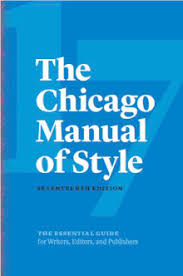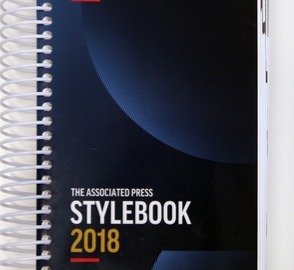Chicago Manual of Style, AP Stylebook, and More: A Primer
- Trish Lockard
- Mar 30, 2019
- 4 min read
Updated: Jun 22, 2019

Whether it's called a style book, style guide, manual, or handbook, the purpose of such books is to provide a set of standards for the writing, formatting and design of documents. Any style guide lays out best practices in usage, language composition, typography, visual composition, and more. Here are the Big 5 of writing style books:
The Chicago Manual of Style (shortened to CMOS)
The Associated Press Stylebook (AP)
The Modern Language Association Handbook (MLA)
The American Psychological Association Manual (APA)
A Manual for Writers of Research Papers, Theses, and Dissertations by Kate Turabian, commonly referred to as Turabian (based on CMOS)
The style guide you should use depends on the kind of writing you do and the intended audience. Please do not blame me, as I had nothing to do with these decisions. But these are the recommended style guides for different types of writing:
Fiction and (most) nonfiction: CMOS
Journalism and website content: AP
Academic writing, primarily literature and humanities: MLA
Social sciences (including psychology, sociology, education, and politics) and often engineering and some forms of business writing: APA
Research papers, theses, and dissertations: Turabian (The title gave it away, didn’t it?)
Chicago Manual of Style Reigns Supreme
The CMOS and the AP are the two most commonly used writing style guides in the United States. But the CMOS is, by far, the most-used style guide of them all, the standard for fiction and nonfiction book publishing, excluding academic works. Adding more clout to the CMOS’s share of the style guide market, Turabian, for students and researchers, is based on Chicago style. I know this because it says so right on the cover.
As an editor, I own the most current editions of each of these style guides in paperback format, except the CMOS. If you’ve ever seen it, it’s a monster. As of this writing, the current edition is the 17th and it weighs in at 3.7 lbs. (1146 pages). Since I’ve been known to edit and write in all kinds of places, from restaurants to coffee houses to my car, I subscribe to the Chicago Manual of Style Online version and it is worth it.
Do Writers Need Style Guides?
You might be thinking, “Yeah, but I’m a writer, not an editor like you. These darn style guides are for you to use, not me.” And I’m fine with that, because the more editing I have to do to clean up your work and bring it up to acceptable writing standards, the more money I get to charge you. That’s harsh, but true. There’s no shame in actually wanting to be the best writer you can possibly be! Learning the rules of good grammar, punctuation, capitalization, spelling, and so on is better for your career in every way.
When I do an editing job, I tell my client which style guide I intend to use based on my perception of the genre of the piece. I include the style guide by name in my contract.
If you are familiar with the major stylistic differences of the top two or three guides, there won’t be any surprises in my edits. (Well, maybe one or two.) Here are a few differences that might surprise you:
The em Dash
The use of em dashes: AP style places a space before and after each em; Chicago does not.
AP: Streaming services — like Netflix, Amazon Prime, and Hulu — are watched daily by most people.
Chicago: Streaming services—like Netflix, Amazon Prime, and Hulu—are watched daily by most people.
Titles
AP puts titles of works like books and movies in quotations marks, Chicago uses italics.
AP: “A Wrinkle in Time”
Chicago: A Wrinkle in Time
The Infamous Oxford Comma
There are scores of stylistic differences between the AP and the CMOS style guides, but this, for me, is the biggie: the Oxford comma. The Oxford (or serial) comma is the term that refers to a comma that separates the penultimate (next to last) item in a list of 3 or more items from the final item introduced by and or or. AP style does not use the Oxford comma, Chicago style does. I can only shake my head in wonder.
AP: She ate ham, sweet potatoes and corn.
Chicago: She ate ham, sweet potatoes, and corn.
This example doesn’t present a problem. But wait….
Janine sat in the lobby with her husband, a lawyer and a photographer.
Janine sat in the lobby with her husband, a lawyer, and a photographer.
The use of the Oxford comma in the second sentence changes the meaning. Is Janine in the lobby with her husband who is a lawyer and photographer? It could be interpreted that way if we’re using AP style. Or is she in the lobby with her husband and two other people who are a lawyer and a photographer, respectively? There are three people with Janine if we’re using the CMOS.
I love the Oxford comma. I have always felt that it eliminates any confusion as to the exact way to read and interpret a list of items. If I am your editor and the appropriate style guide for your work is the Chicago Manual of Style, I will be adding in those Oxford commas till the cows come home!
To learn more about Chicago Manual of Style, click here.
To learn more about AP Stylebook, click here.
To learn more about MLA Handbook, click here.
To learn more about APA Manual, click here.
To learn more about Turabian, click here.












